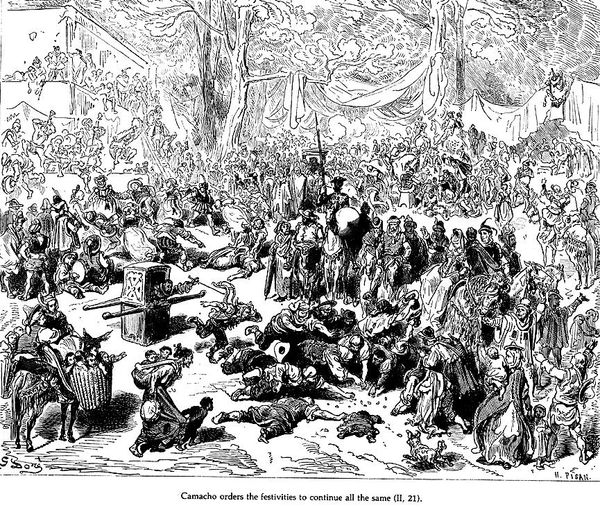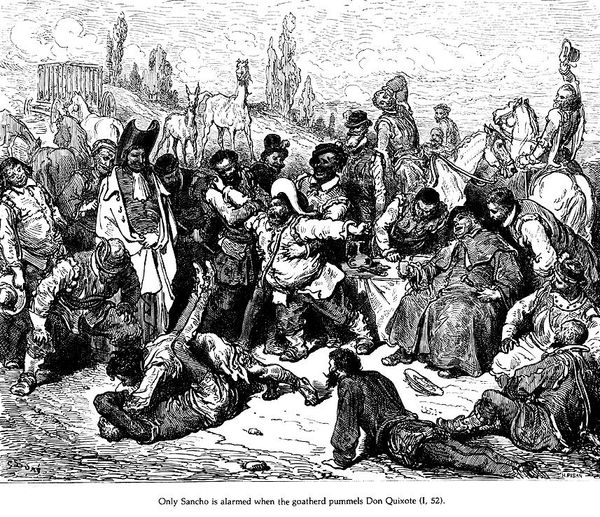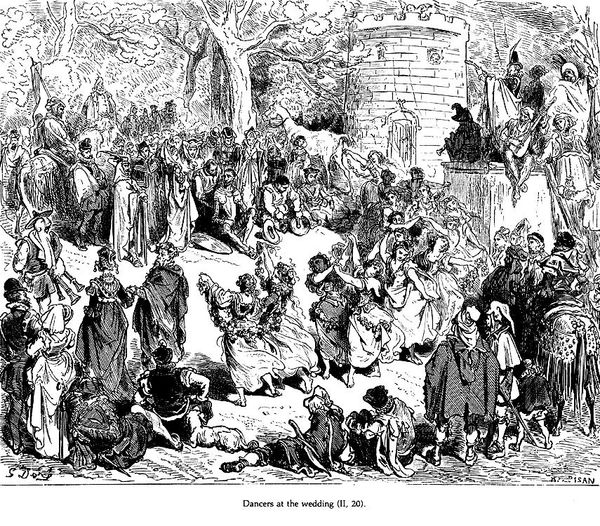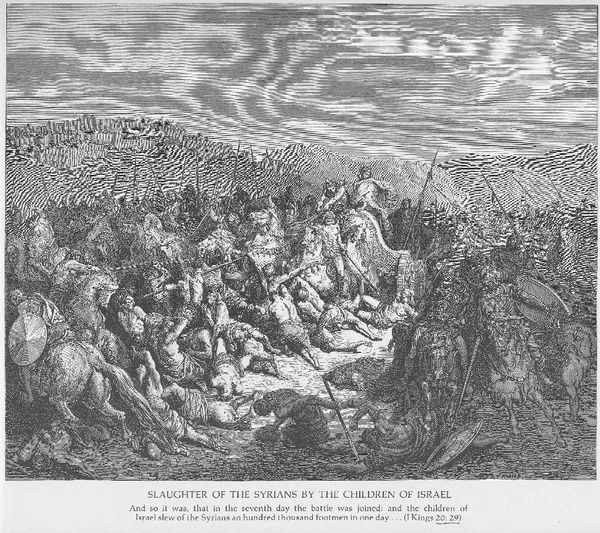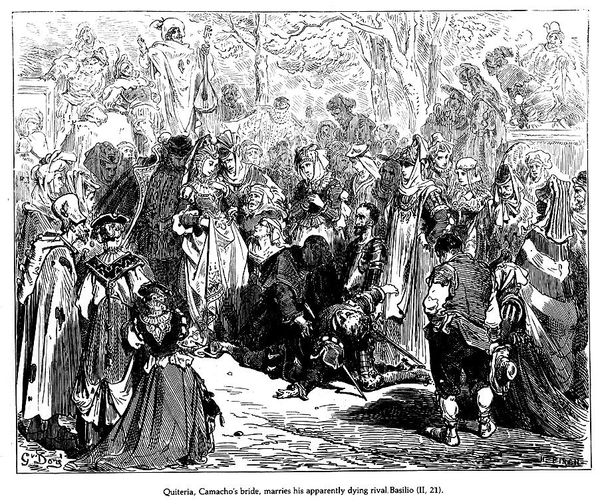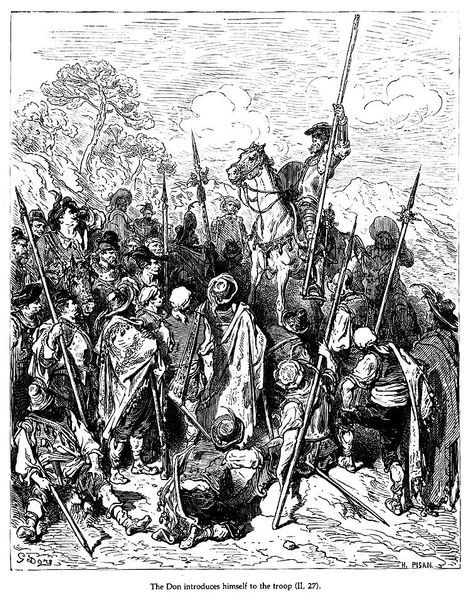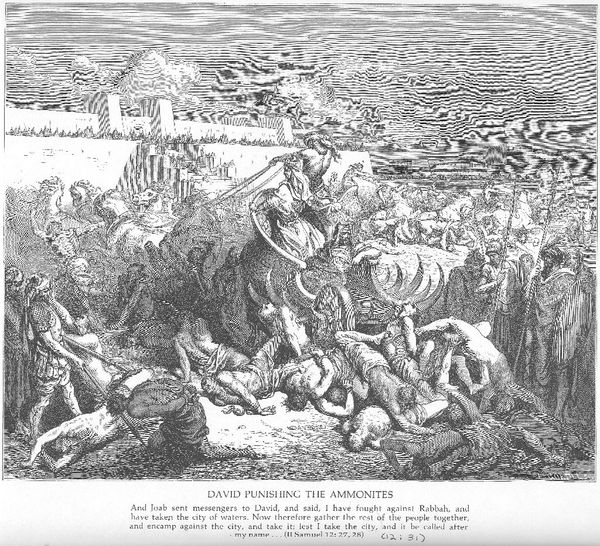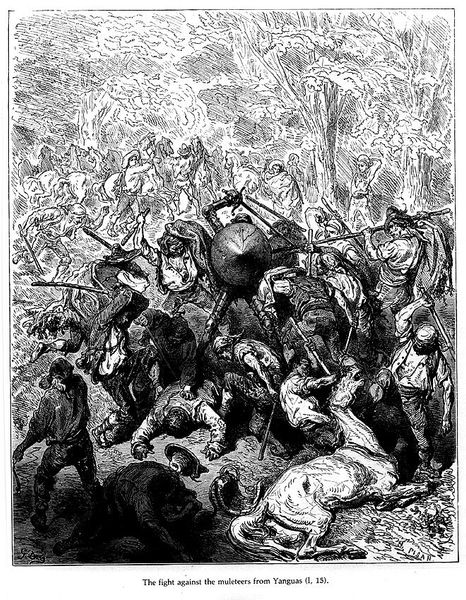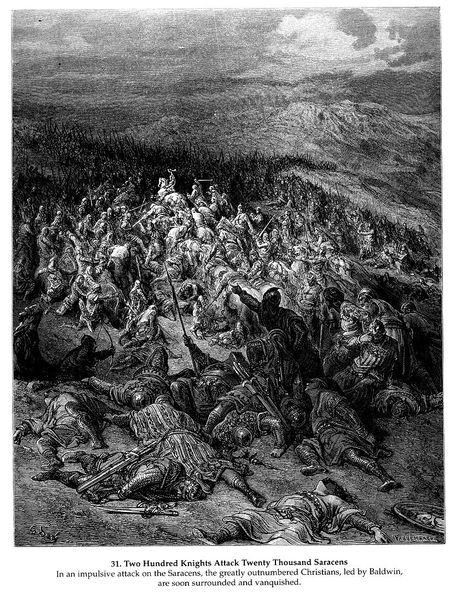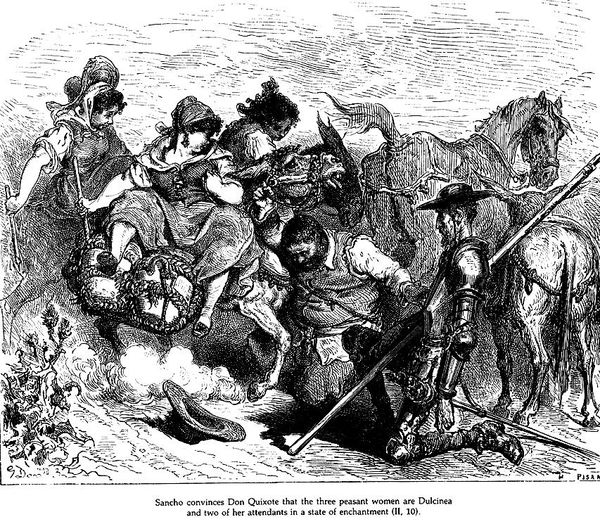
drawing, paper, ink, woodcut, pen
#
portrait
#
drawing
#
narrative-art
#
animal
#
pen illustration
#
war
#
landscape
#
figuration
#
paper
#
ink
#
plant
#
woodcut
#
horse
#
pen
Copyright: Public domain
Gustave Doré created this “Don Quixote” engraving using the technique of wood-engraving. This image, made of stark black lines on a white background, captures a frenzied moment. Look closely, and you will see bodies strewn across the ground, a chaotic wedding celebration. It’s difficult to imagine the artist's process. A wood engraver like Doré would have painstakingly carved lines into a block of wood. The density of the lines create the illusion of shadow and depth. Wood engraving was a laborious craft that allowed for mass production in books and newspapers. This artwork reflects the rise of industrialization and mass media in the 19th century, where images could be widely disseminated to a growing reading public. Understanding Doré's wood engraving of “Don Quixote” requires us to consider the labor and technical skill involved, and its wider historical and social context.
Comments
No comments
Be the first to comment and join the conversation on the ultimate creative platform.
